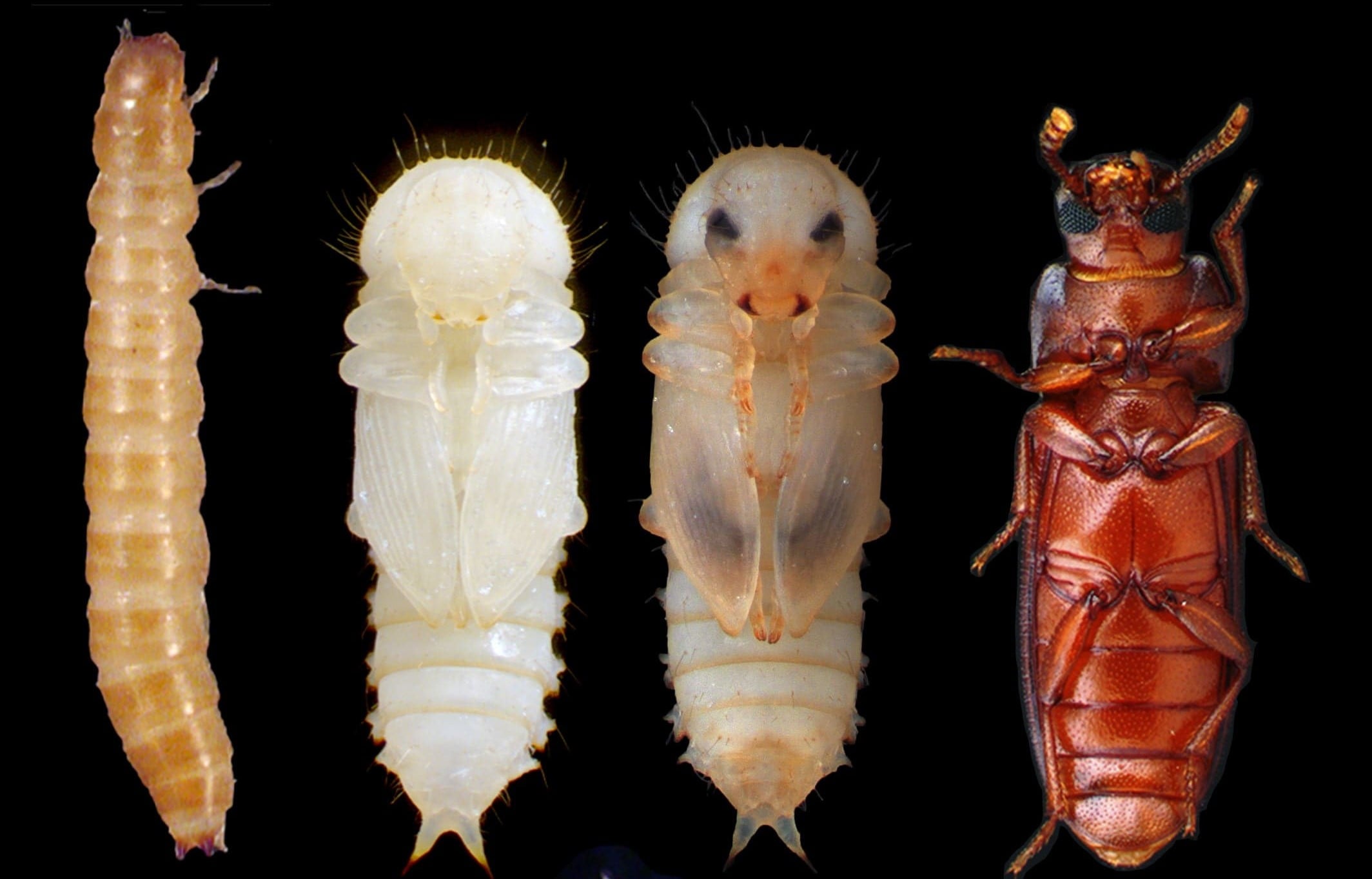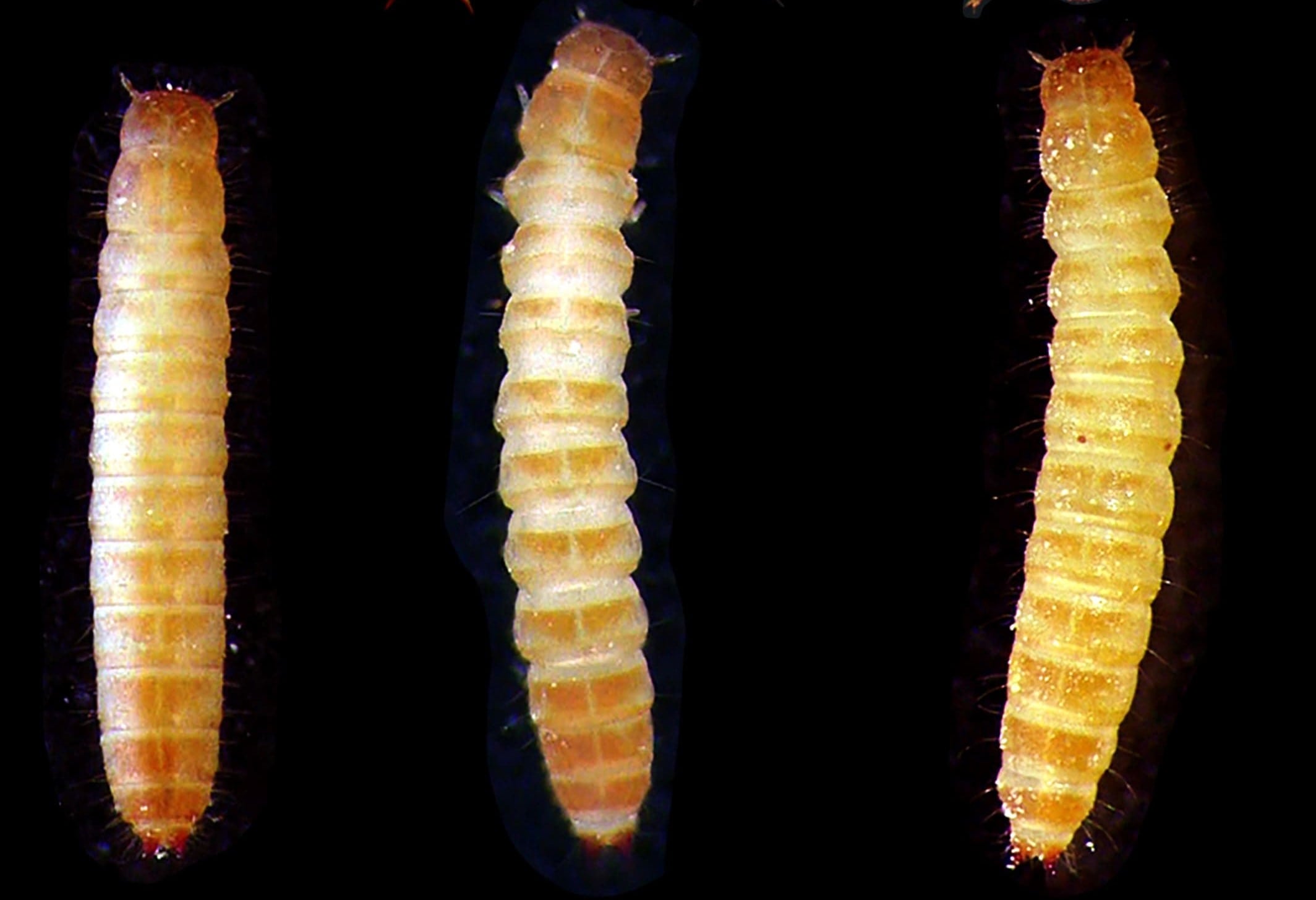The metamorphosis of insects could reveal the keys to our transition to adolescence
An investigation led by the Institute of Evolutionary Biology (IBE) uncovers key mechanisms initiating metamorphosis in the red flour beetle.
The study demonstrates that, without the intervention of myostatin, the beetle cannot transition to adulthood and remains a larva throughout its life cycle.
For the first time, the research determines the metabolic signal initiating the transition to adulthood based on the insect's weight.
Studying these metabolic pathways in humans could help us understand the regulation of our transition to adolescence.

In both humans and insects, body mass plays a crucial role in initiating the transition from juvenile to adult stage. This process is triggered upon reaching a specific critical weight. In insects, this critical weight drives the onset of metamorphosis, while in humans, it marks the beginning of adolescence.
The timely initiation of puberty is crucial for individual development, as having adequate energy reserves is vital for reproduction. Similarly, insects need to reach a minimum weight to successfully develop adult structures and reproduce. Both processes are inherently linked to the synthesis of steroid hormones. However, the signals connecting body mass to puberty and metamorphosis remain an enigma.
The study, recently published in PLOS Genetics and led by the Institute of Evolutionary Biology (IBE), a joint center of the Spanish National Research Council (CSIC) and Pompeu Fabra University (UPF), sheds light on the molecular processes linking body mass to hormonal production, initiating metamorphosis and puberty.
Unveiling the Relationship Between Body Mass and Steroid Hormone Synthesis
When insects reach their final juvenile stage and attain their critical mass, steroid synthesis is activated, triggering the metamorphosis process. However, the mechanisms that initiate this process remain unknown.
Xavier Franch-Marro, the lead researcher at IBE and co-author of the study, emphasizes: "Understanding the connection between body mass and hormone synthesis in insects can provide clues about controlling the onset of puberty and establishing therapies to prevent premature puberty."
To unravel this mystery, the IBE team manipulated various signaling pathways in the red flour beetle, Tribolium castaneum. Surprisingly, by inactivating the Transforming Growth Factor beta (TGFß) pathway, they observed that beetle larvae, instead of initiating metamorphosis, remained in a juvenile state until death. David Martín, the lead researcher at IBE and co-author of the study, comments: "Compared to humans, it's as if, without the activation of this pathway, we would stay in an adolescent state throughout our lives, continually growing."

With these results, IBE researchers revealed the signaling pathways triggering steroid production at the end of the juvenile stage, initiating metamorphosis. However, what factor activates these pathways at the precise moment of reaching Critical Weight remains unknown.
It is known that body mass plays a crucial role in initiating the transition to adulthood in humans. Consequently, diseases affecting body weight, such as anorexia or obesity, can delay or advance the onset of adolescence. "We have observed a correlation between body mass and the activation of these signaling pathways, so we aim to identify the proteins expressed in relation to body weight," explains Xavier Franch.
Revealing the Relationship Between Body Mass and the Onset of Insect Metamorphosis
The key lies in Myostatin, a growth factor originating in muscles during their development that activates signaling pathways triggering metamorphosis when Critical Weight is reached.
"This factor acts as a link between steroid production and Critical Weight, signaling the body that an optimal weight has been reached and that we can initiate metamorphosis or adolescence, in our case, with sufficient energy reserves," says David Martín.
"The signaling pathways responsible for activating metamorphosis in insects are the same as those possessed by humans. Therefore, these results could hold clues about our transition to adolescence and open the door to future research in human health," emphasizes Xavi Franch.
Referenced article: Chafino S, Salvia R, Cruz J, Martín D, Franch-Marro X. TGFß/activin-dependent activation of Torso controls the timing of the metamorphic transition in the red flour beetle Tribolium castaneum. PLOS Genetics. 2023 Nov 27;19(11): e1010897. DOI: 10.1371/journal.pgen.1010897
